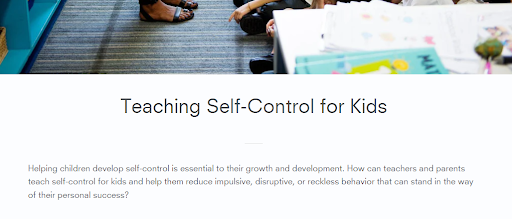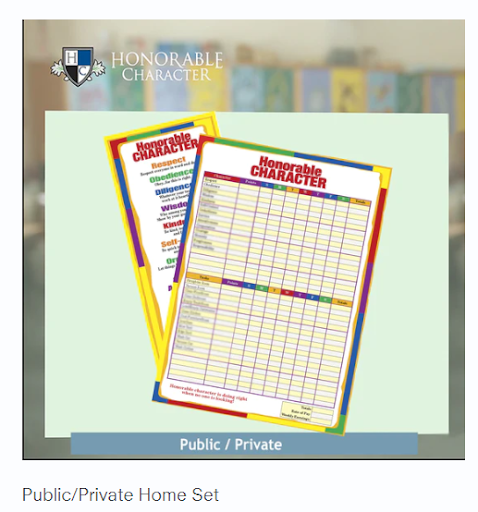Teach Money Management to Homeschooled Kids
Homeschooling parents have the opportunity to teach their kids character, academic, and practical real-world life skills. However, one of the most important things parents teach their kids is responsibility. Responsibility impacts most aspects of our lives, from punctuality to money management.
Why Financial Literacy in Schools Needs Improving
Money management is vital for everyone, yet most kids do not truly understand the value of money. Many schools do not teach basic money skills and financial planning in their curriculum. So, kids learn about money and financial decisions by observing their parents.
Kids often mistakenly assume all they have to do is tap a phone, tap a plastic card, or insert a card into a machine to buy things in person. With online purchases, they see mom or dad select what they want online and check out. A few days later the items arrive at their home.
To further compound the problem, some kids play a wide range of gaming apps that feature in-game purchases. When children play the games, pop-up notifications occur each time they level up to ask if they want to purchase some reward.
Unaware of how money, credit, and debt works, kids tap away to make in-game purchases. Later, their parents are shocked when they discover their kids spent hundreds of dollars on these in-game purchases.
Why Is Money Management Important?
As you can imagine, kids with this type of inadequate money exposure will often struggle later in life when they become young adults. They find it challenging to manage their money to buy the things they want while paying rent, a car loan, and so on.
Kids lacking in practical money skills find it harder to apply money management concepts to make responsible decisions later in life. As such, parents need to take the time to teach personal finance to their children as part of the homeschool curriculum.
Teaching the Basics of Money
A homeschool money management curriculum does not have to be complicated. Parents do not need a finance degree to teach the basics of money to their children, whether in preschool, middle school, or high school. Parents can even learn a thing or two about money management while teaching their children.
Step 1: Start Early
The sooner you start teaching the concepts of money and financial literacy to your children, the better. There are several excellent resources available for parents looking to give their kids homeschool money lessons in K-5-appropriate language and format. If your kids are a little older—tweens or teens—it is okay as long as you take what they know about money and expand their knowledge of saving, giving, and spending.
Step 2: Cover the Topics of Saving and Spending.
What do you do when you have money? You either spend it, donate it, or save it. Your kids need to understand the benefits and consequences of their financial choices and decisions.
Parents often use piggy banks with younger children to reinforce money management concepts. Some parenting experts recommend giving a child three piggy banks: one for saving, one for giving, and the remaining one for spending on things the child wants—like a video game. Piggy banks are tangible tools to use during money management activities for kids who are new to the principles behind financial planning.
Spending comes naturally for most kids, but it is essential to guide your children in understanding the principles of saving and sharing. Allowing them the freedom to manage their spending money gives them a meaningful real-life experience in a safe environment. They learn the value of money when they have to delay a purchase for lack of funds.
Step 3: Use Board Games to Further Reinforce Money Management
Monopoly, Life, and other practical money skills games are great tools to teach your kids about the basics of money. These games require your child to decide how to spend their money and when to save it. It also teaches them the consequences of money-related decisions they make and how their choice between saving and spending can affect their finances in the future.
Step 4: Open a Bank Account
After your child saves some money, a trip to open a savings account at a bank is another real-world experience of money management for kids. The bank makes a grown-up impression on your child. A savings account teaches kids the concept of compound interest as they watch their savings account balance grow.
Step 5: Set Up Online Banking
Set up online banking access on your child’s computer or tablet. When they can see their account balance daily, it helps encourage them to want to save more to see their balance grow. As part of your money management lesson plans, you can also teach them basic banking literacy skills like how to use an ATM, stay safe when purchasing something online, or make transfers between bank accounts.
Creating Healthy Relationships Between Kids and Money

Step 6: Put Them in Charge of Household Finances
A fun exercise is to sit down with your teenage children and let them manage the real-world household finances—with some guidance. You can provide them with a list of the monthly bills and expenses and how much they have to spend to pay those.
If you are not ready to turn over your household finances to your children, let them do the grocery shopping. Most kids do not understand how much food costs. They know mom or dad buys food, so it is there to eat when they get hungry.
Help them make out the grocery list. Next, have them go through the grocery store’s ads to see what items are on sale. Last, have them go through the grocery store’s digital coupons and other coupons. Incorporating these things into their lesson includes the added benefit of showing them how to save money when spending money in real life. This sort of homework teaches life skills that can set them up for financial success later in life, no matter what age they are when they start.
Step 7: Teach Them Bookkeeping Skills
If your kids are middle school or high school students, teach them how to track their spending by keeping a journal. Anytime they spend money, they should record the 1) date, 2) location, 3) amount, and 4) item they purchased with their money.
Anytime they earn or receive money, have them record it in their journal, too, as well as where they put the money—in their piggy bank, savings account, etc. This simple task teaches them necessary bookkeeping skills.
By taking the time to incorporate homeschool financial literacy into your children’s homeschool curriculum, you help them learn about the responsibilities that come with money.
FAQsShould you teach money management to your kids?
Certainly. Very few schools offer real-life money management lessons or skills to students. Whether your child is homeschooled or attends a school outside the home, it will likely be your prerogative to teach them how to use and manage their money in their best interest.
How long does a money management lesson take?
Money management lessons don’t have to be long. As little as five minutes a day for younger children, or 30 minutes every other day for older children, should be enough to cover all the most important aspects of everyday financial planning.
What should parents teach their kids about money?
There are several important aspects to teach your children about money, including:
- The value of money, or how much time or effort goes into earning money, and how that translates into the value they place on the things they want to purchase with that money
- Basic budgeting for things like groceries or home maintenance
- The value of saving, whether in a piggy bank or savings account and how that can allow them to purchase the things they want even if they don’t have enough money from the start
How to Set Up Your Kids for Financial Success

The best way to set up your kids for financial success is to include a homeschool finance curriculum in your lesson plans. Even if your kids aren’t homeschooled, few institutions focus on teaching money management in schools, and you may still need to fill in that life skills gap yourself. You can find a wide range of free resources to help you develop topics for all school levels and age levels.
HONORABLE CHARACTER’s Home System is another valuable money management tool for parents. It provides a simple structure with a unique approach to end nagging, and reinforces character development while teaching kids about the importance of family participation through chores. The concepts in this character-building chore chart can easily be adapted and applied to any age or grade level.
The HONORABLE CHARACTER Home System helps kids cultivate habits and skills necessary to become emotionally centered, productive, and successful adults. To learn more about our Home System, please feel free to browse online or contact us at 866-416-5043 today!





